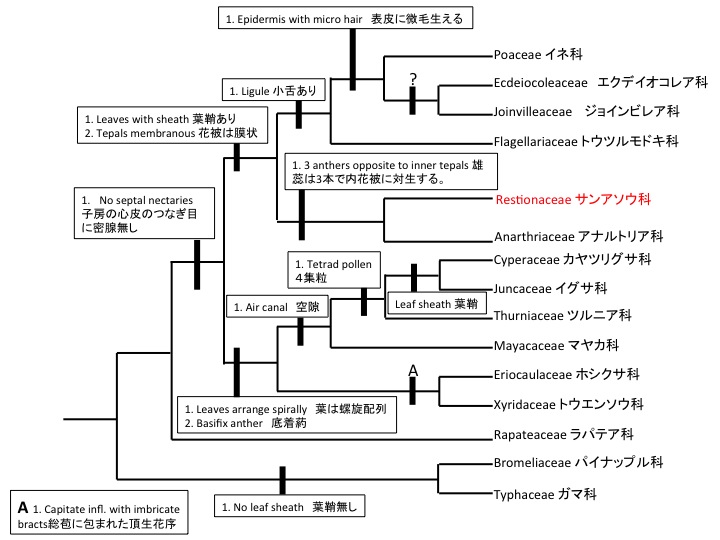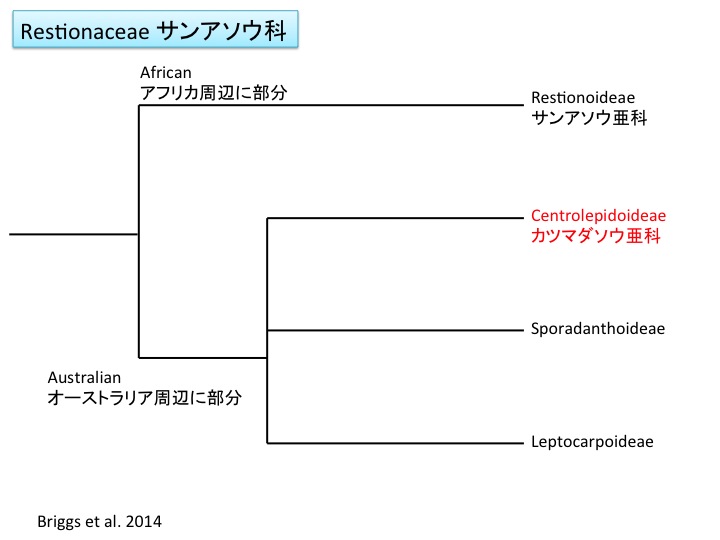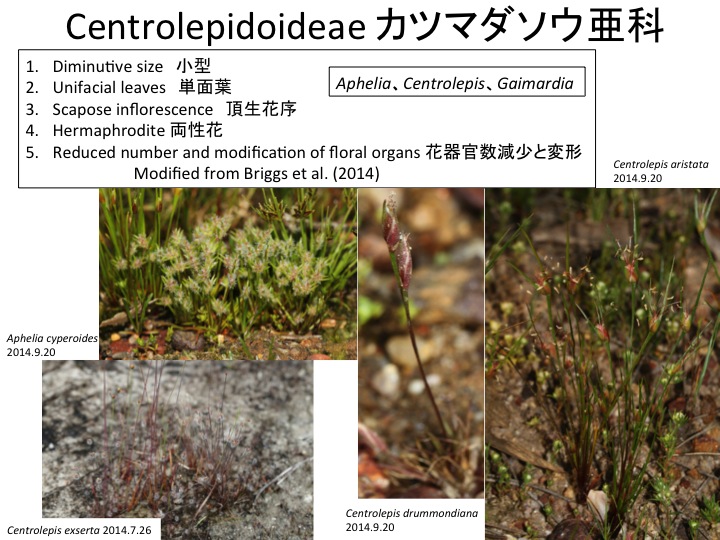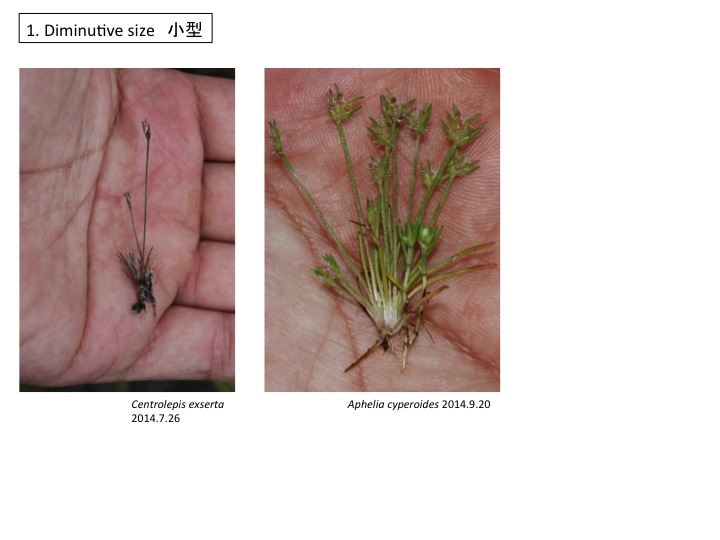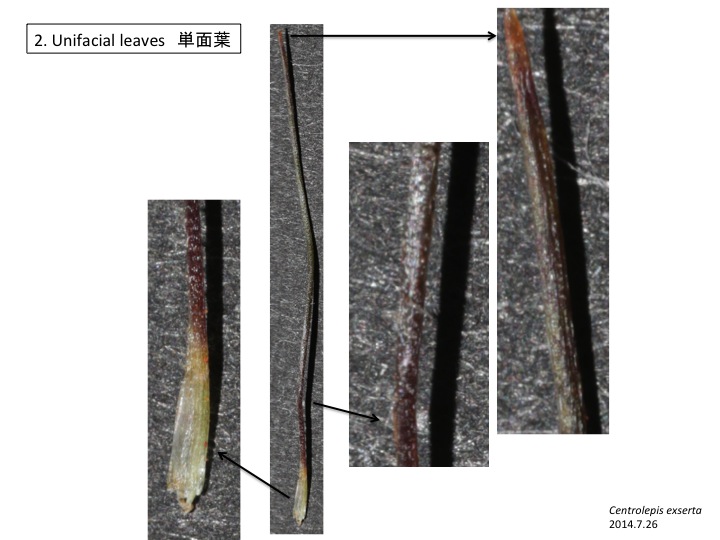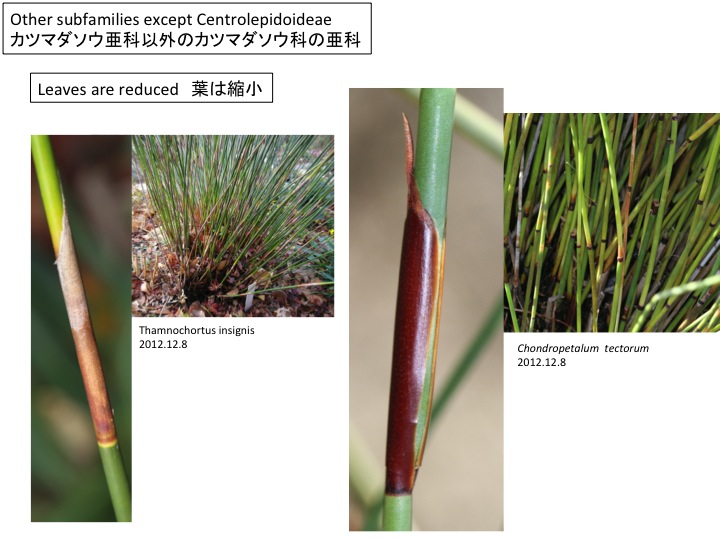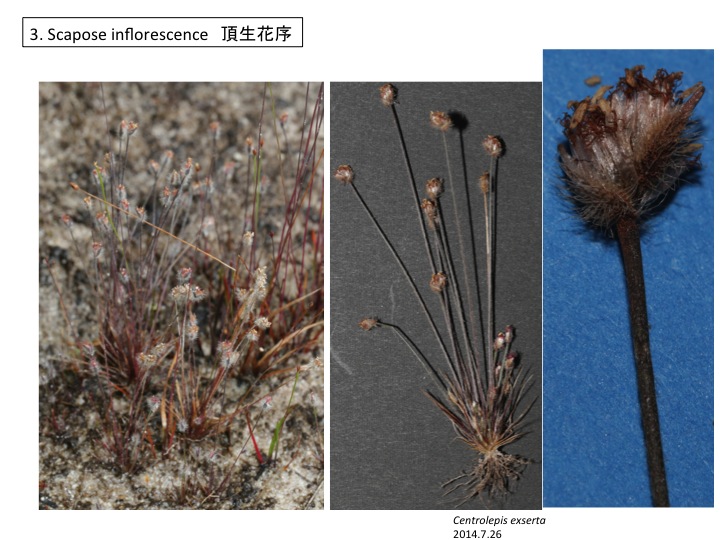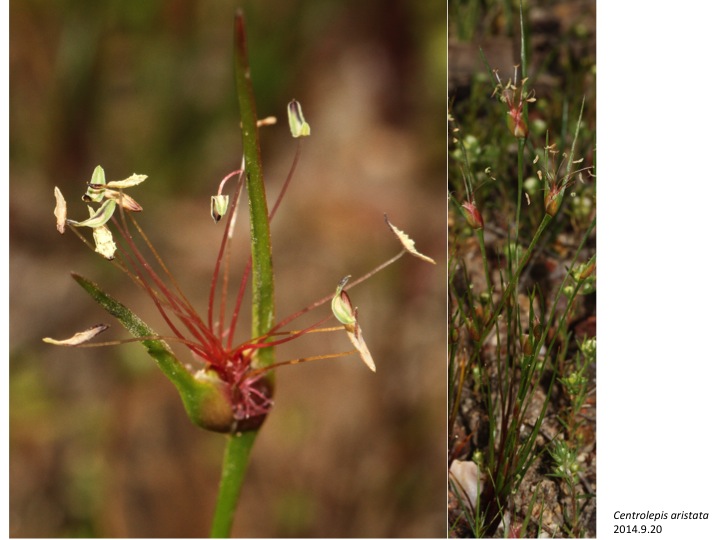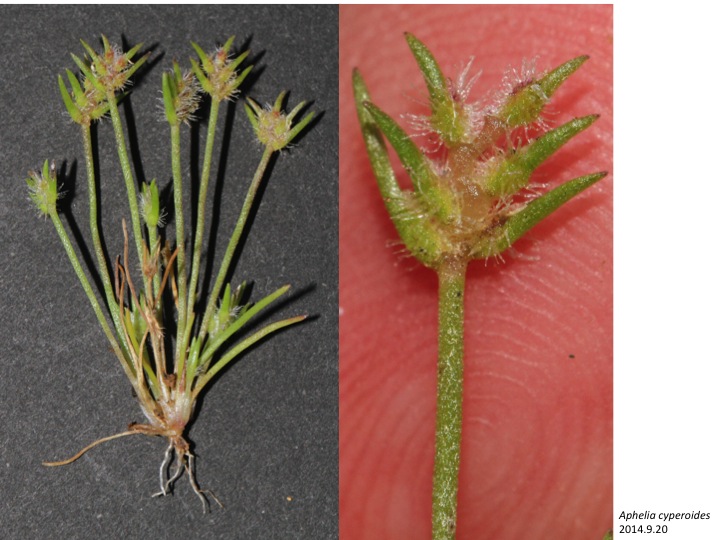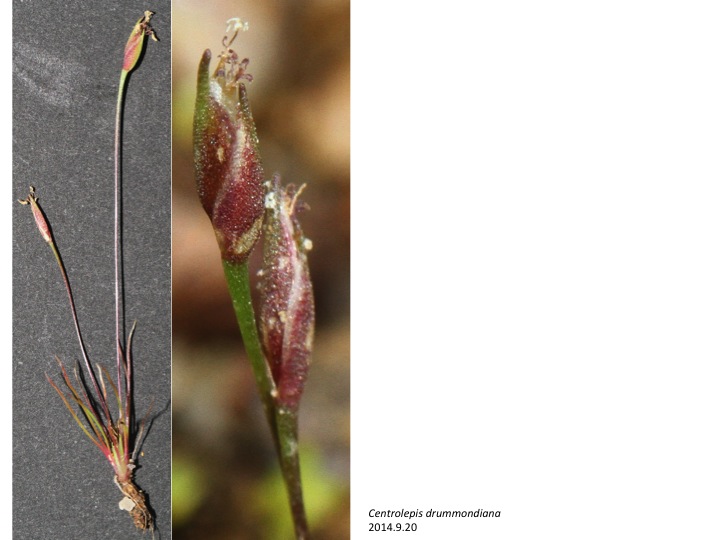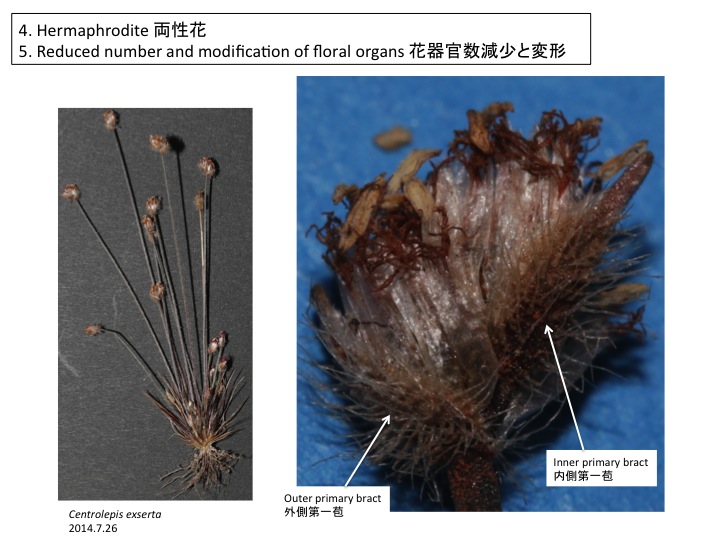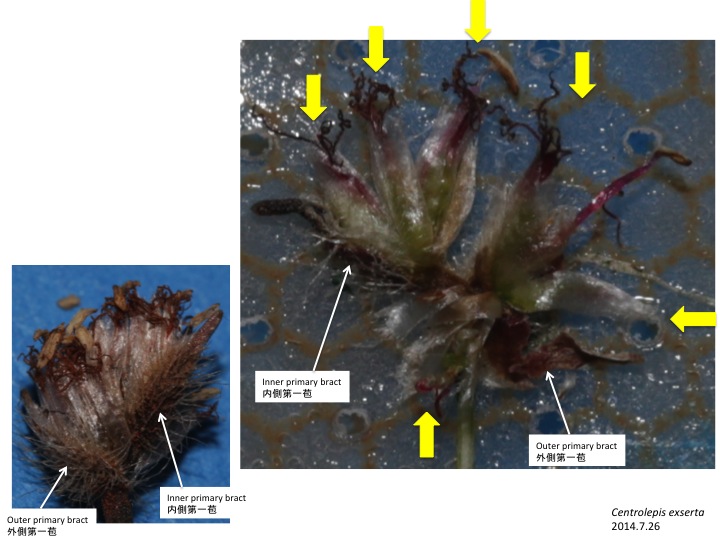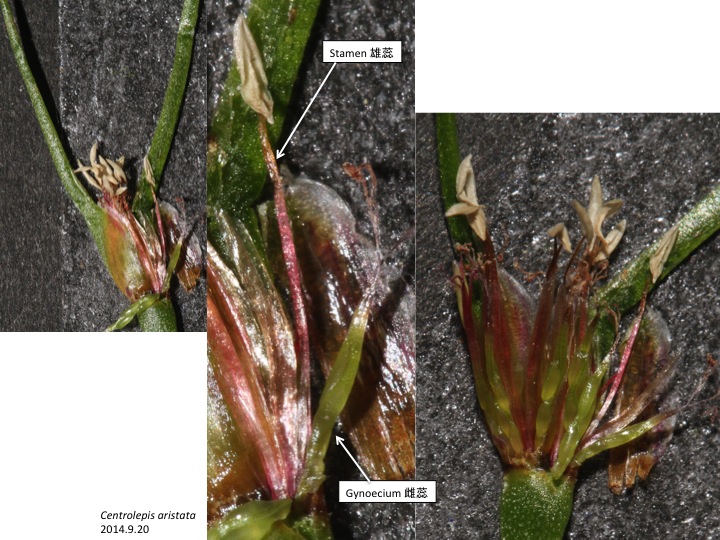Restionaceae is composed of four subfamilies.
カツマダソウ亜科はAphelia、Centrolepis ケントロレピス属、Gaimardiaの3属約35種からなり、ほとんどの種はオーストラリアから東南アジアにかけて分布する。Gaimardia属の1種が南米に分布する (Cooke 1998)。特殊な形態をしていることからカツマダソウ科として扱われてきたが、遺伝子を用いた系統解析から、サンアソウ科の中の一群であることがわかり、カツマダソウ亜科とするのが妥当であることがわかった(Briggs et al. 2014)。
The Centrolepidoideae is composed of 35 species in three genera: Aphelia, Centrolepis, and Gaimardia. Most species are distributed from Australia to South Eastern Asia and a species in Gaimardia is distributed in South America.(Cooke 1998). Centrolepidoideae was treated as the Centrolepidaceae because of the specific morphological characters. However, molecular phylogenetic analyses showed that the Centrolepidaceae is included in the Restionaceae and should be classified as Centrolepidoideae in the Restionaceae (Briggs et al. 2014).
Briggs, B.G. et al. 2014. Phylogeny of the restiid clade (Poales) and implications for the classification of Anarthriaceae, Centrolepidaceae and Australian Restionaceae. Taxon 63: 24-46.
外側第一苞と内側第一苞の内側に複数の花を形成する。一つの黄色矢印が一つの花を示す。
Yellow arrows indicate flowers.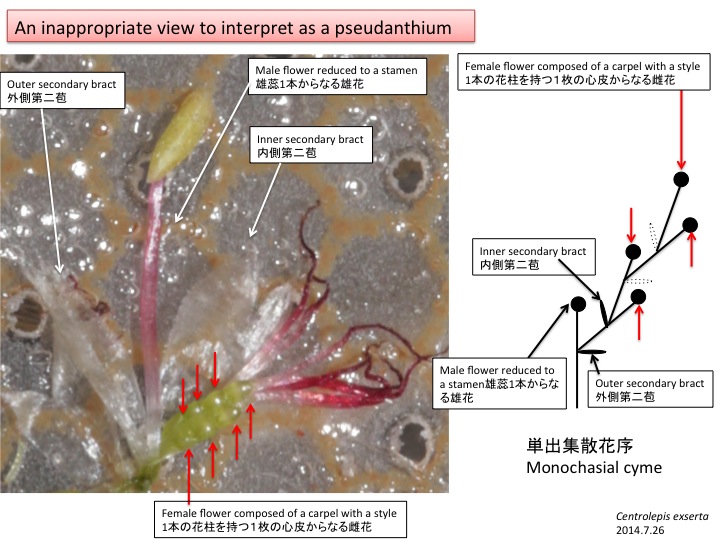
Eichler (1875)はカツマダソウ属の生殖器官は偽花で、単出集散花序を形成し、雄蕊1本に退化した雄花が1つと、1本の花柱を持つ1枚の心皮からなる雌花を複数持つと考えた。雄花は外側第二苞、最基部の雌花は内側第二苞で抱かれている。それ以外の雌花を抱く苞は退化したと解釈した。その後の多くの研究もこの見解を引用した。
Eichler (1875) interpreted the reproductive structure as a monochasial cyme and most authors followed his interpretation. A pseudanthium is a monochasial cyme and composed of (1) a male flower reduced to a single stamen and (2) female flowers, each of which is composed of a carpel with a style. The male flower is subtended by an outer secondary bract and the basal female flower is subtended by a inner secondary bracts. Bracts subtending other carpels are interpreted to be reduced.
Eichler , A. W. 1875. Blüthendiagramme. Engelmann, Leipzig, Germany.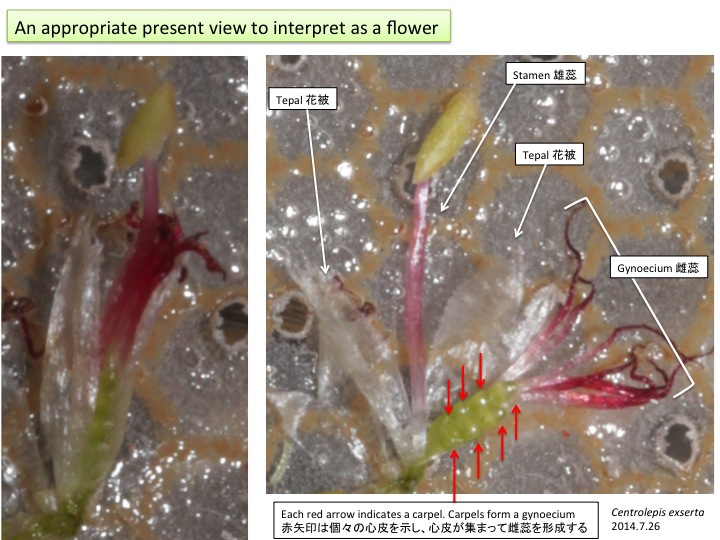
他方、何人かの研究者は花序ではなく花であると解釈した。Sokoloff et al. (2009)は走査型電子顕微鏡を用いて初期発生を観察し、心皮が輪状に形成され、後に花托の片側が伸長して心皮が縦に連なるようになることを示した。花序の発生過程で輪状に花が生じることはほとんど無いが、花の形成過程では通常、心皮は輪状に形成される。このことから、Sokoloff et al. (2009)はカツマダソウ亜科の3属は偽花ではなく通常花を形成すると解釈し、現状では、この考えが妥当であろう。
On the other hands, several authors interpreted the reproductive structure as a flower. Sokoloff et al. (2009) observed the early development by SEM and found that carpels are formed contemporarily as a whole and one side of the receptacle elongates to make an alignment of carpels. Such a whole structure at the early developmental stage is often observed in flowers but quite rare in inflorescences (Sokoloff et al. 2009). Therefore, they interpreted that the reproductive structure should be a flower.
Sokoloff, D.D., Remizowa, M.V., Linder, H.P., and Rudall, P.J. (2009). Morphology and Development of the Gynoecium in Centrolepidaceae: The Most Remarkable Range of Variation in Poales. Am J Bot 96, 1925-1940.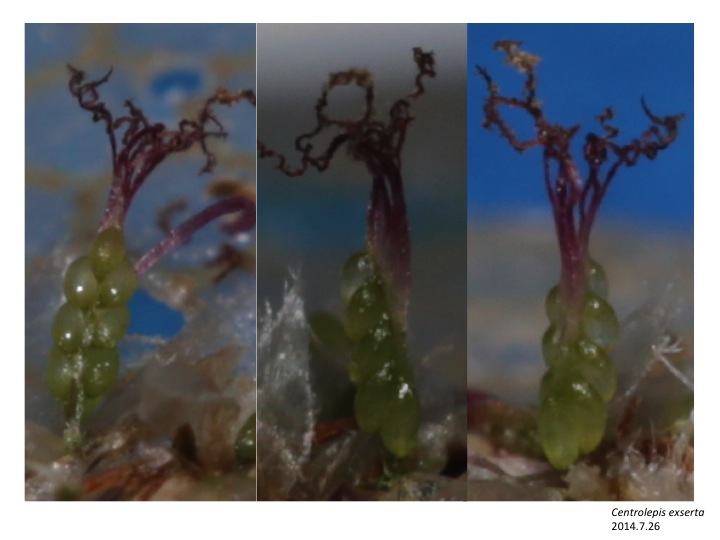
8つの心皮からなる1本の雌蕊。
A gynoecium composed of eight carpels.

